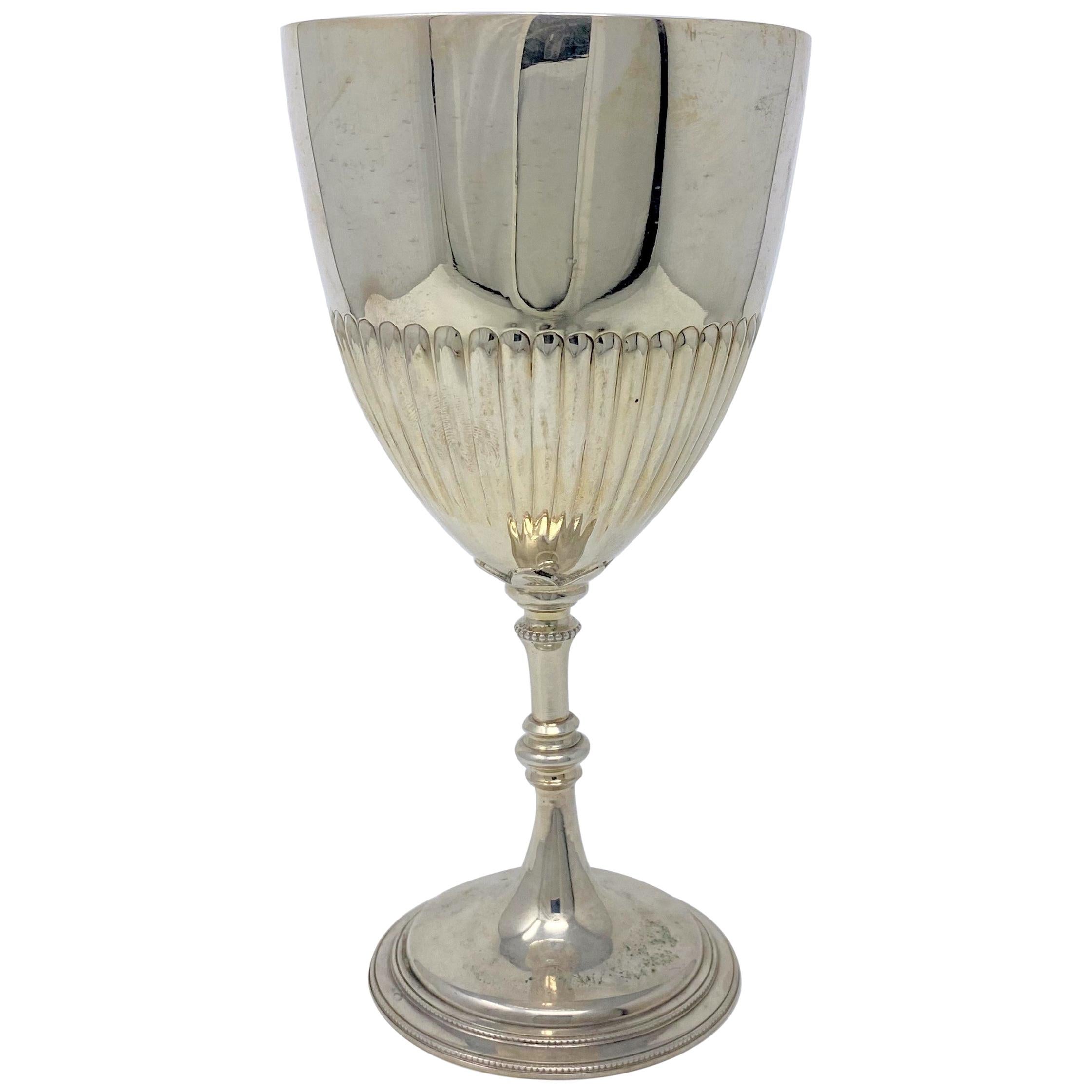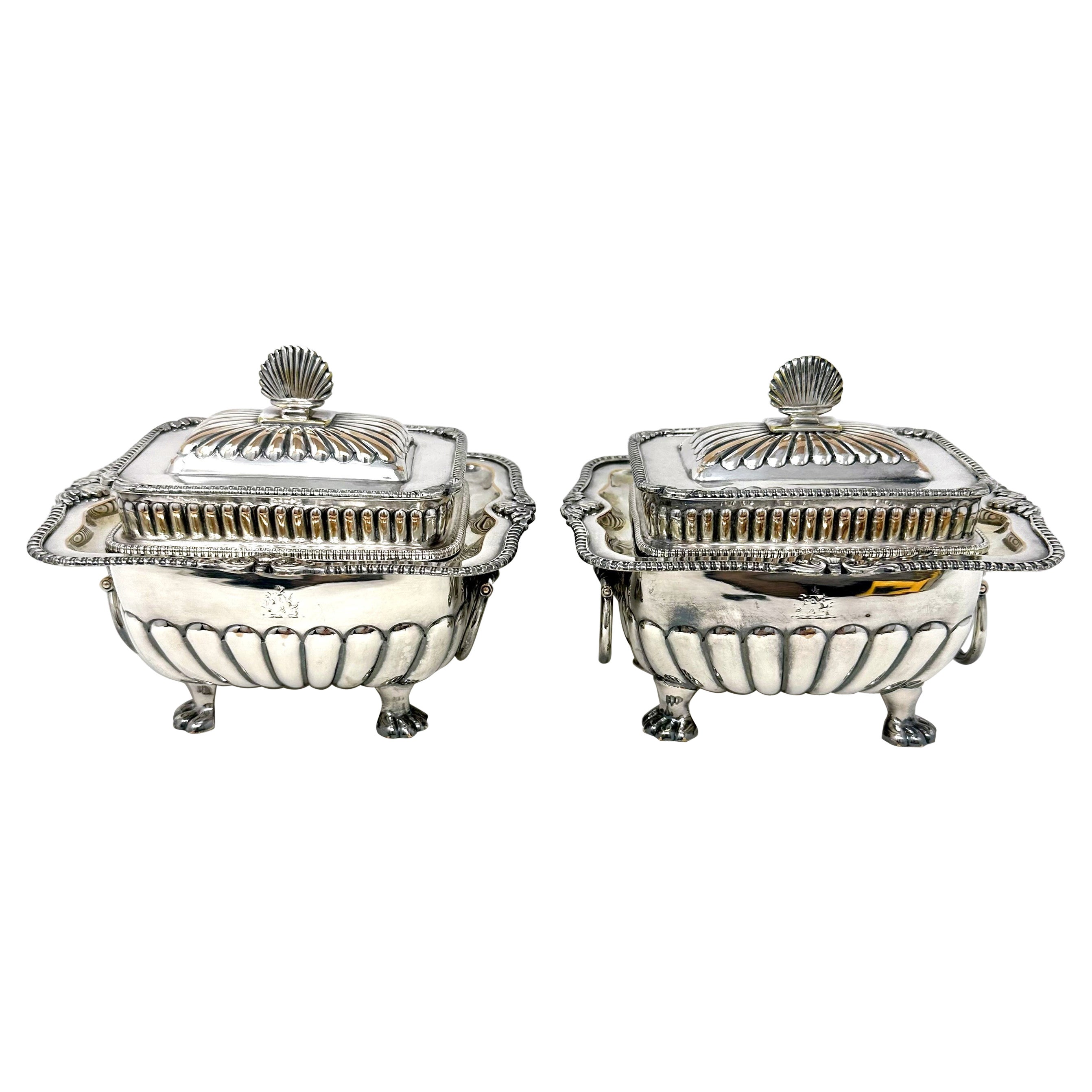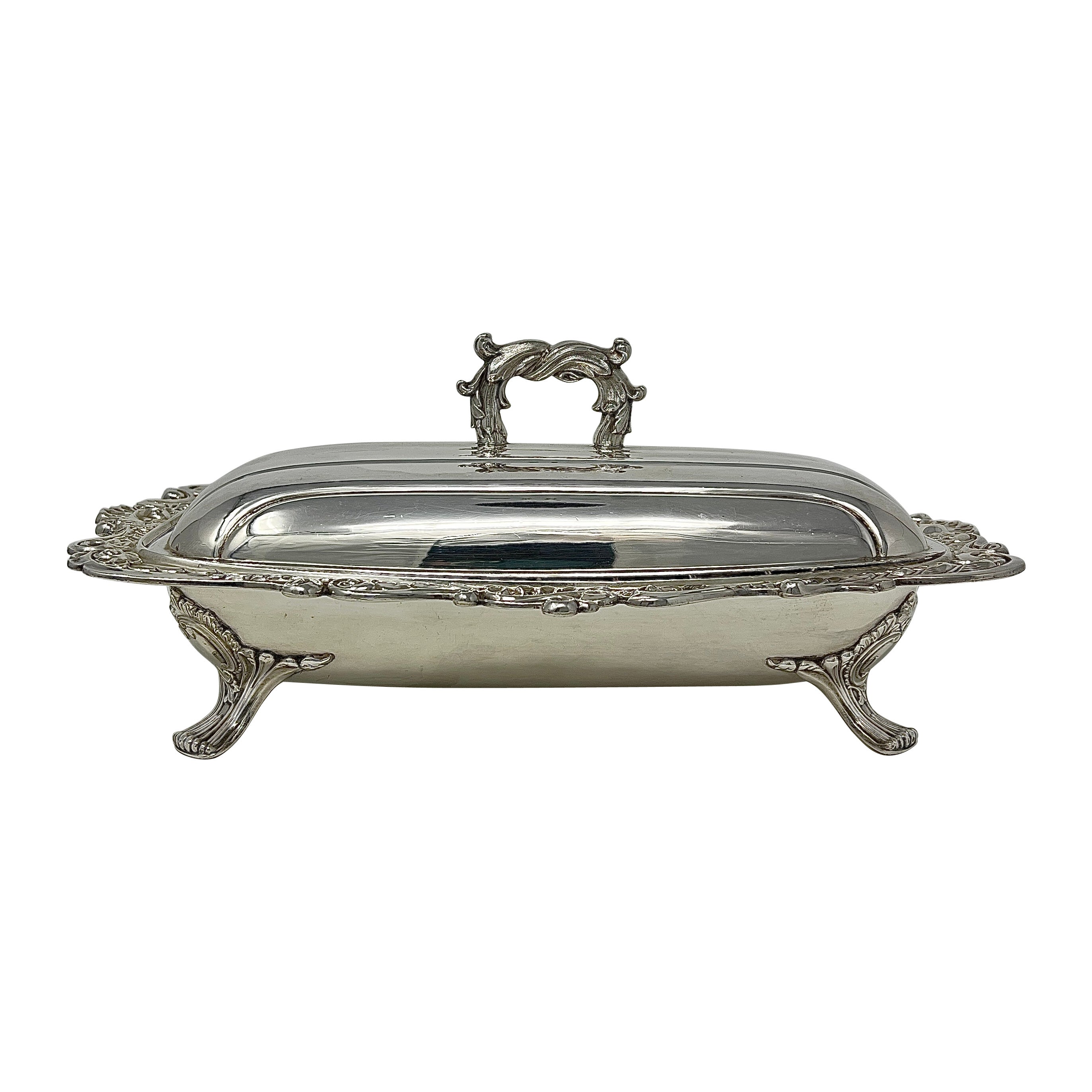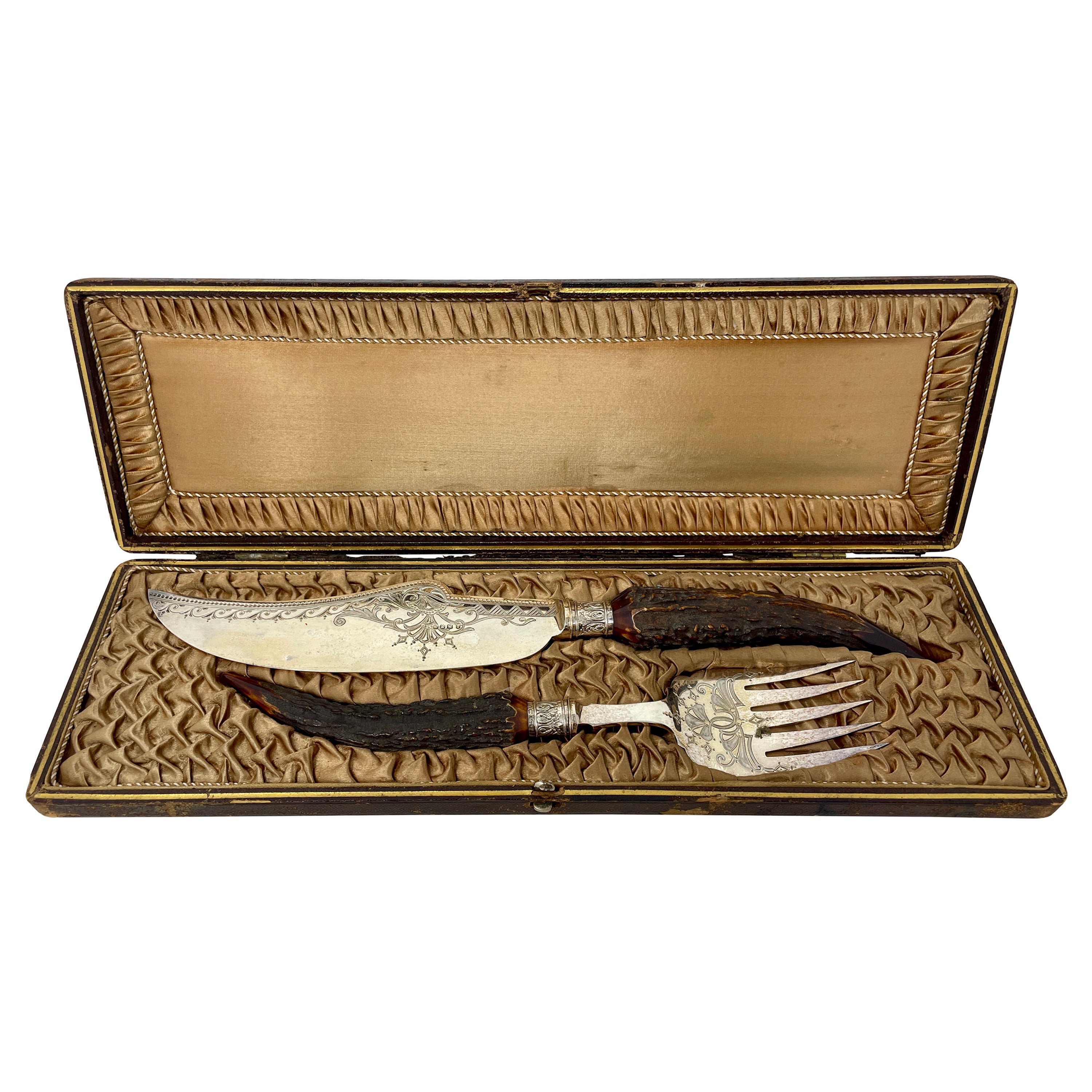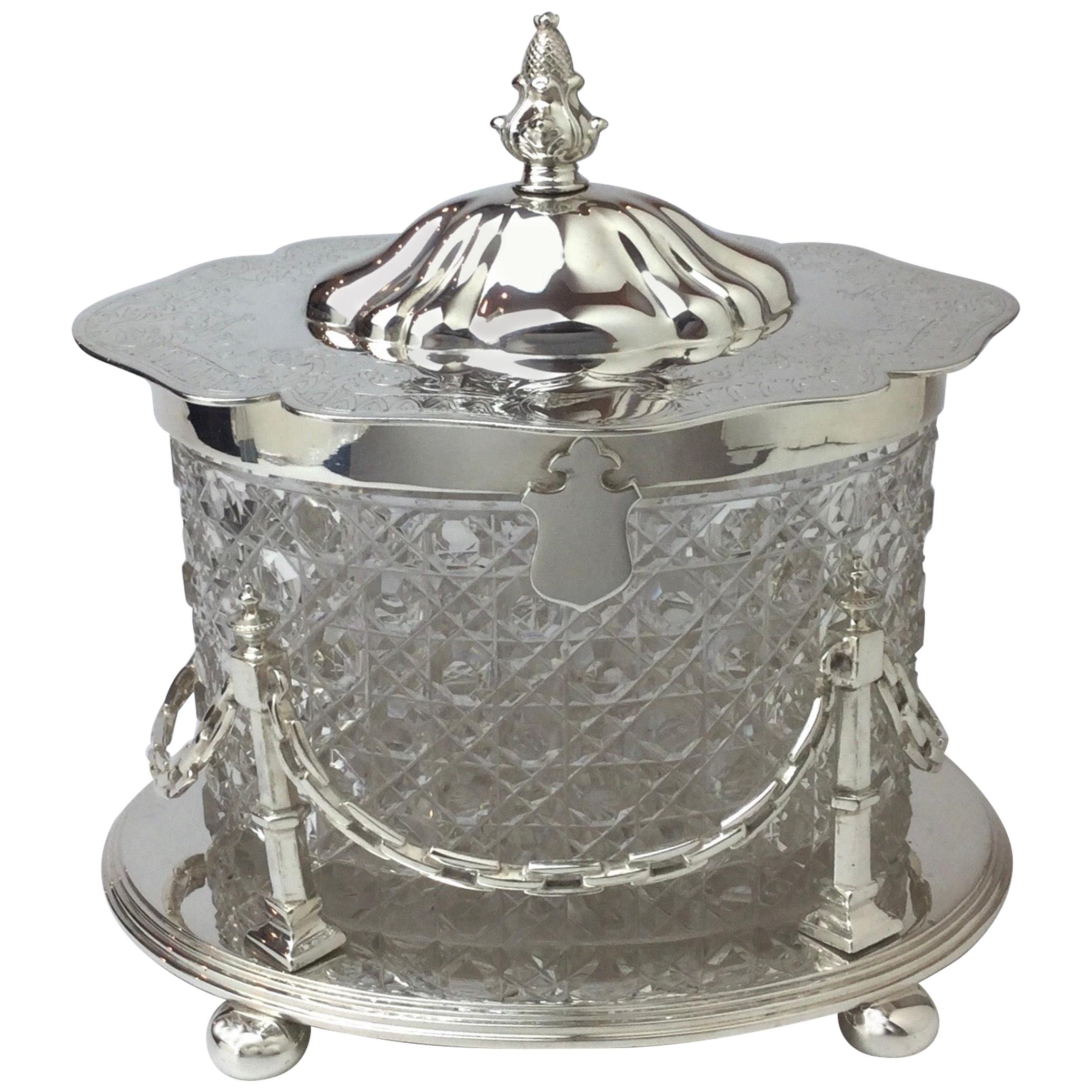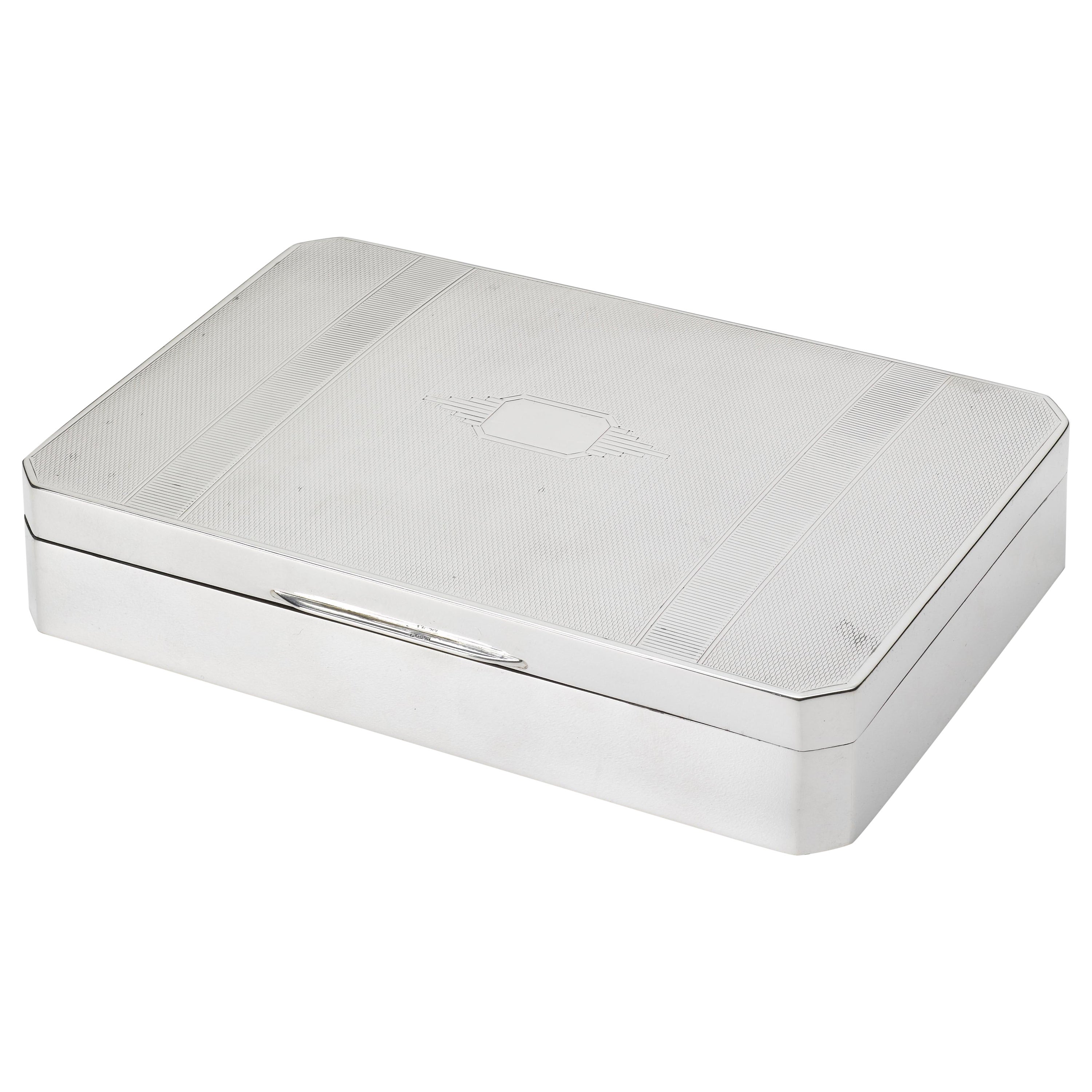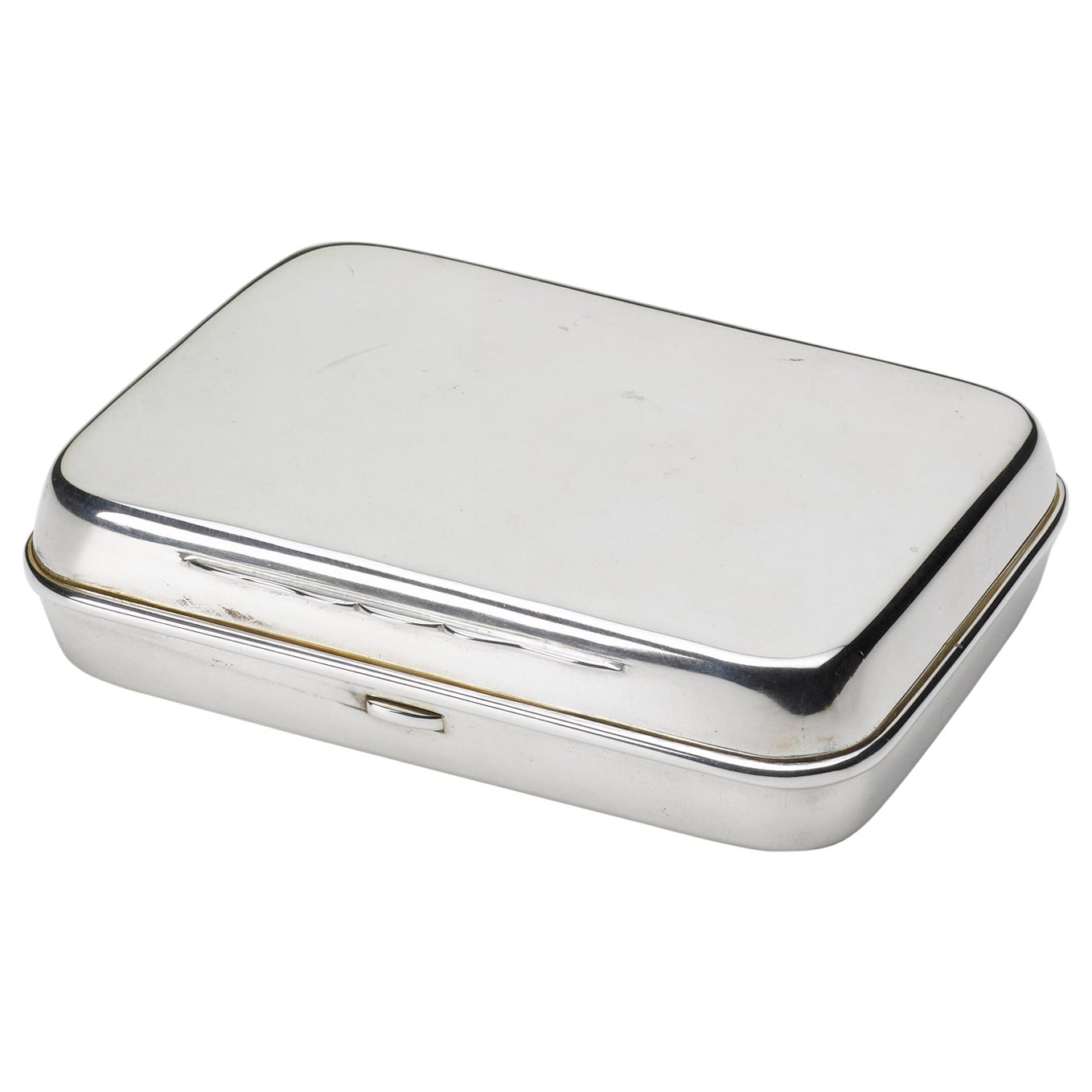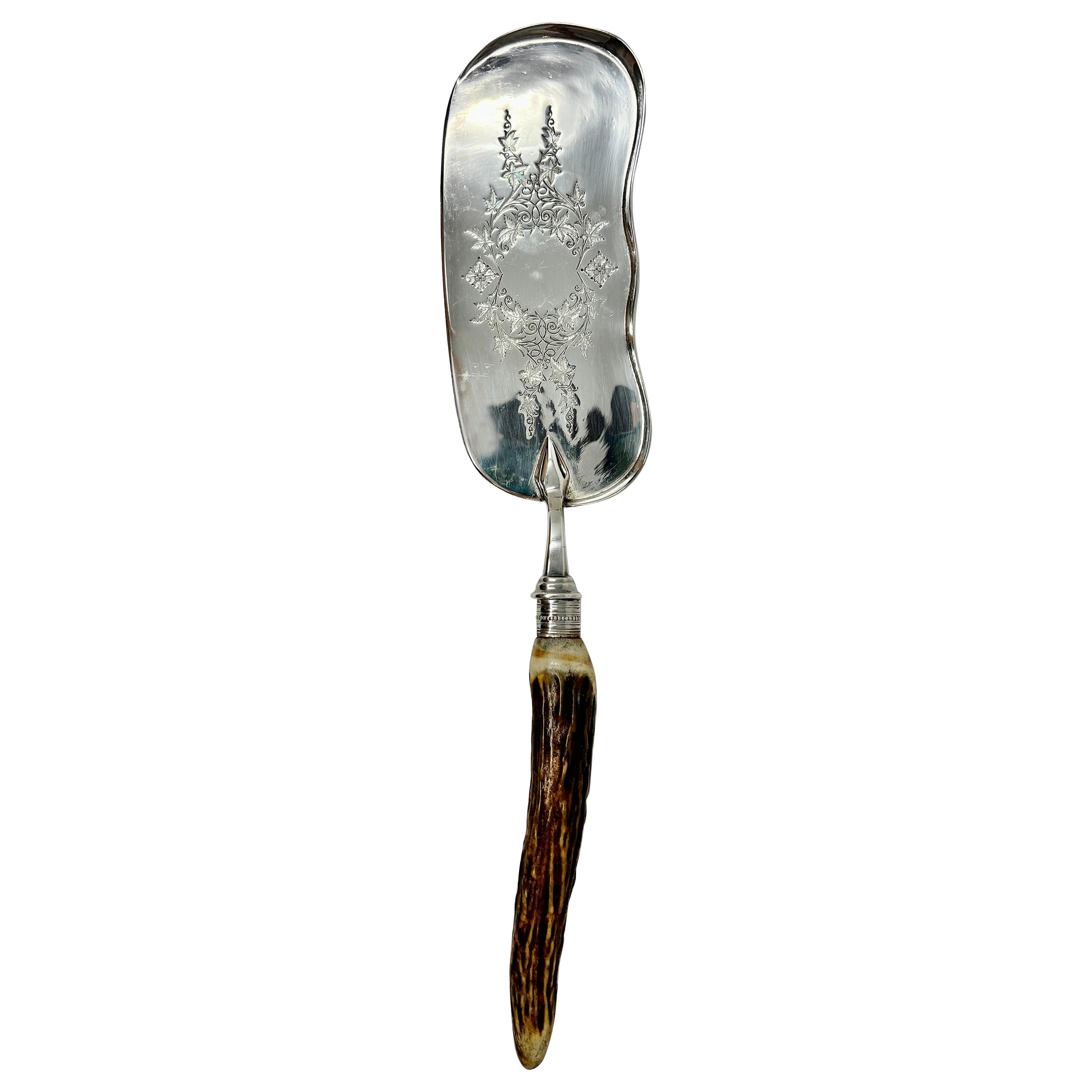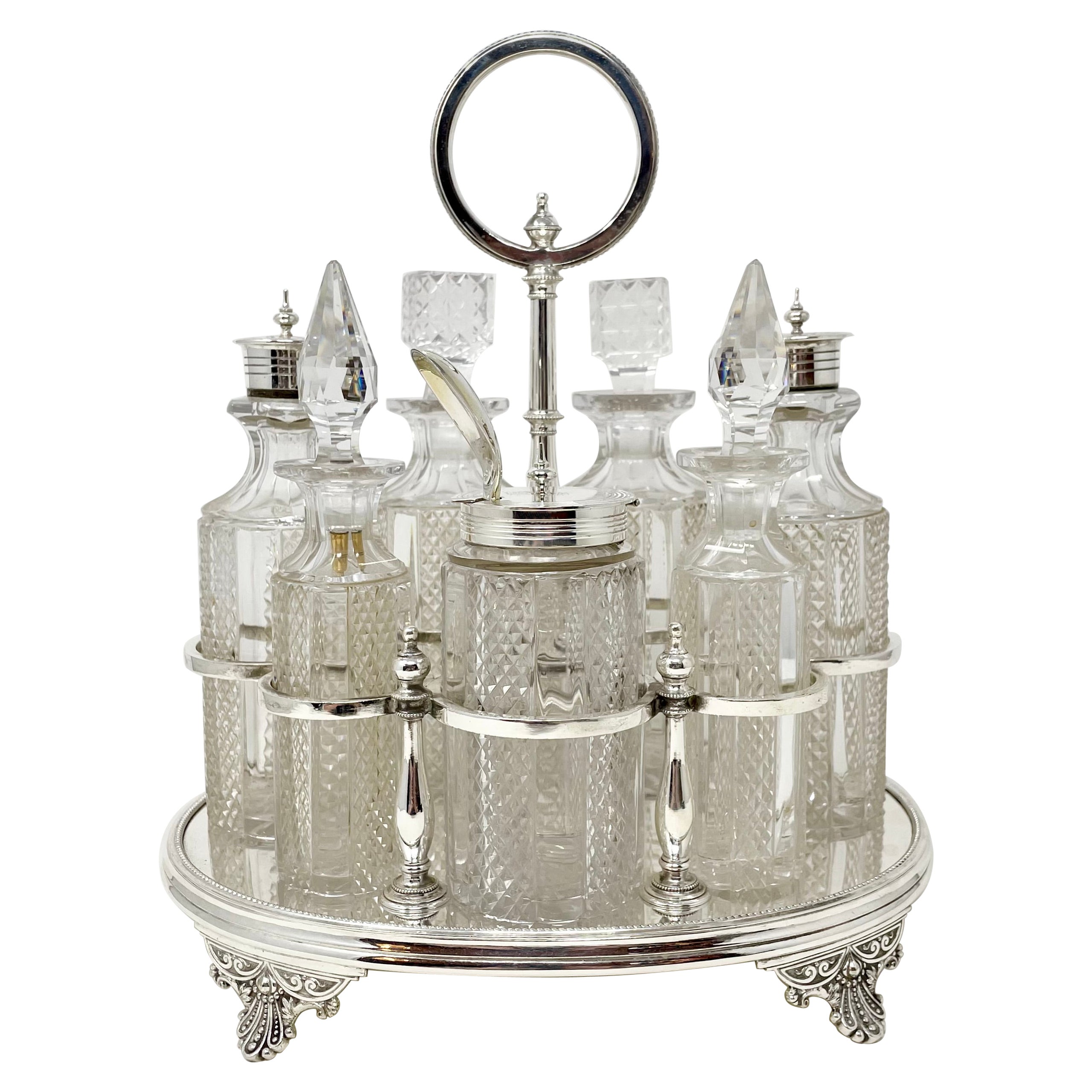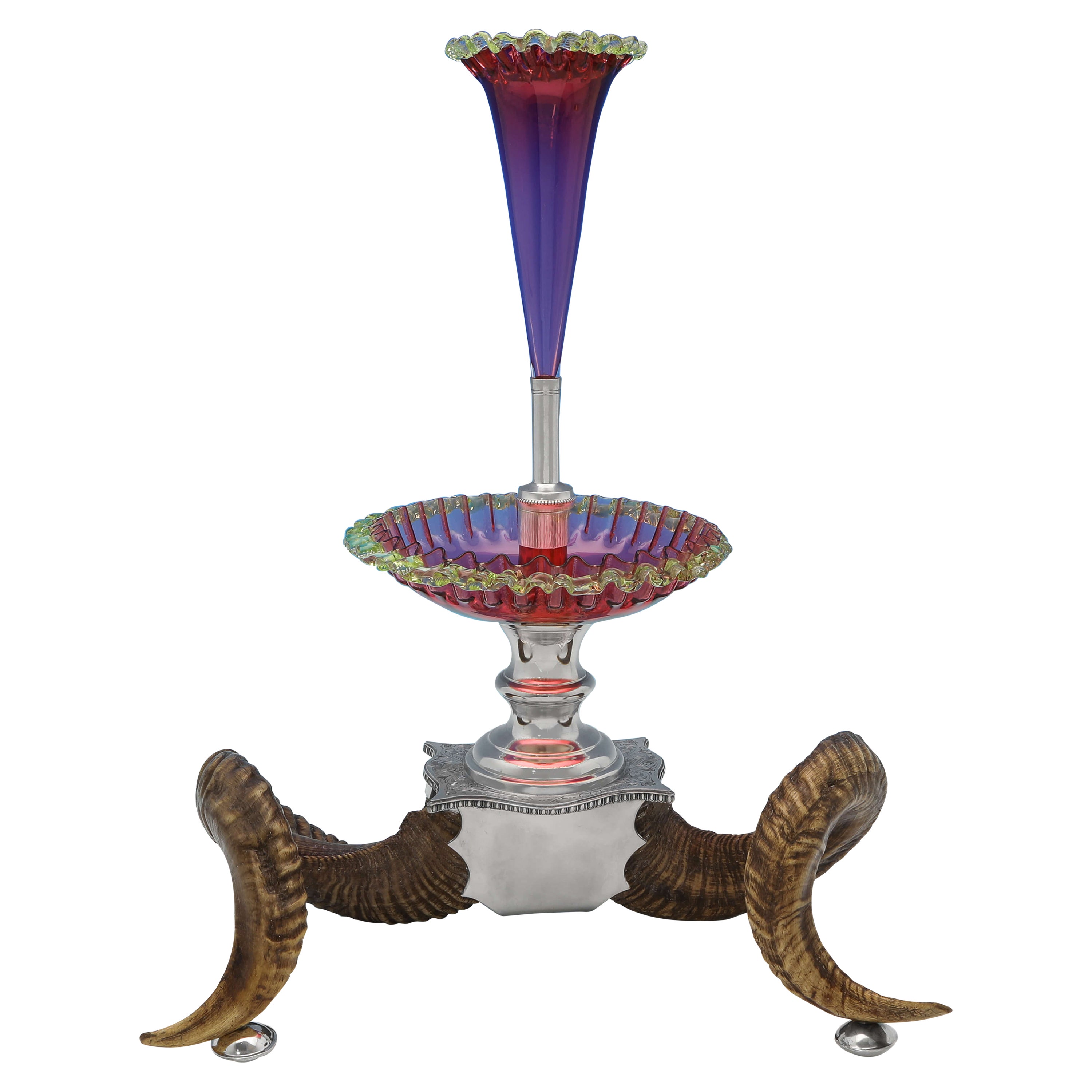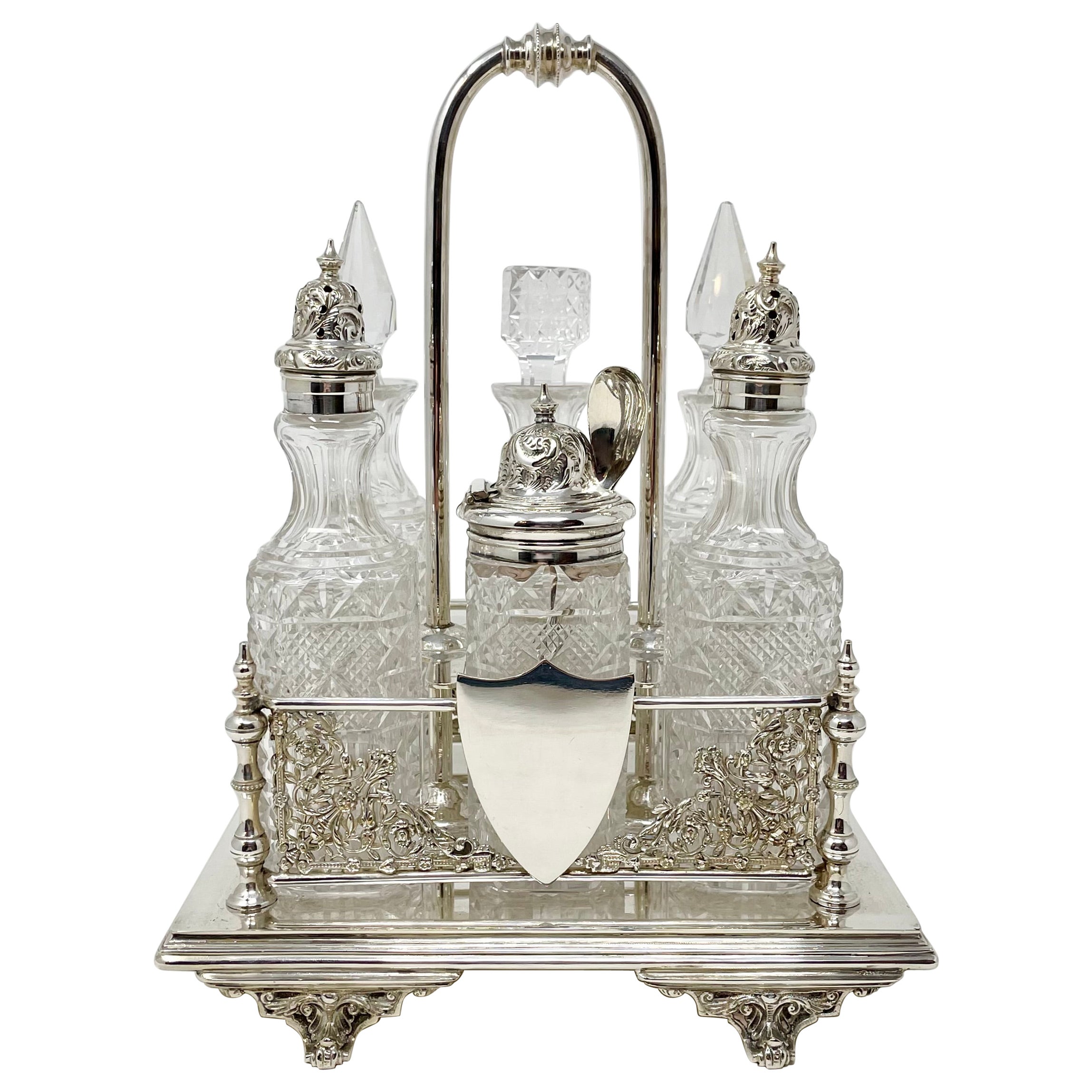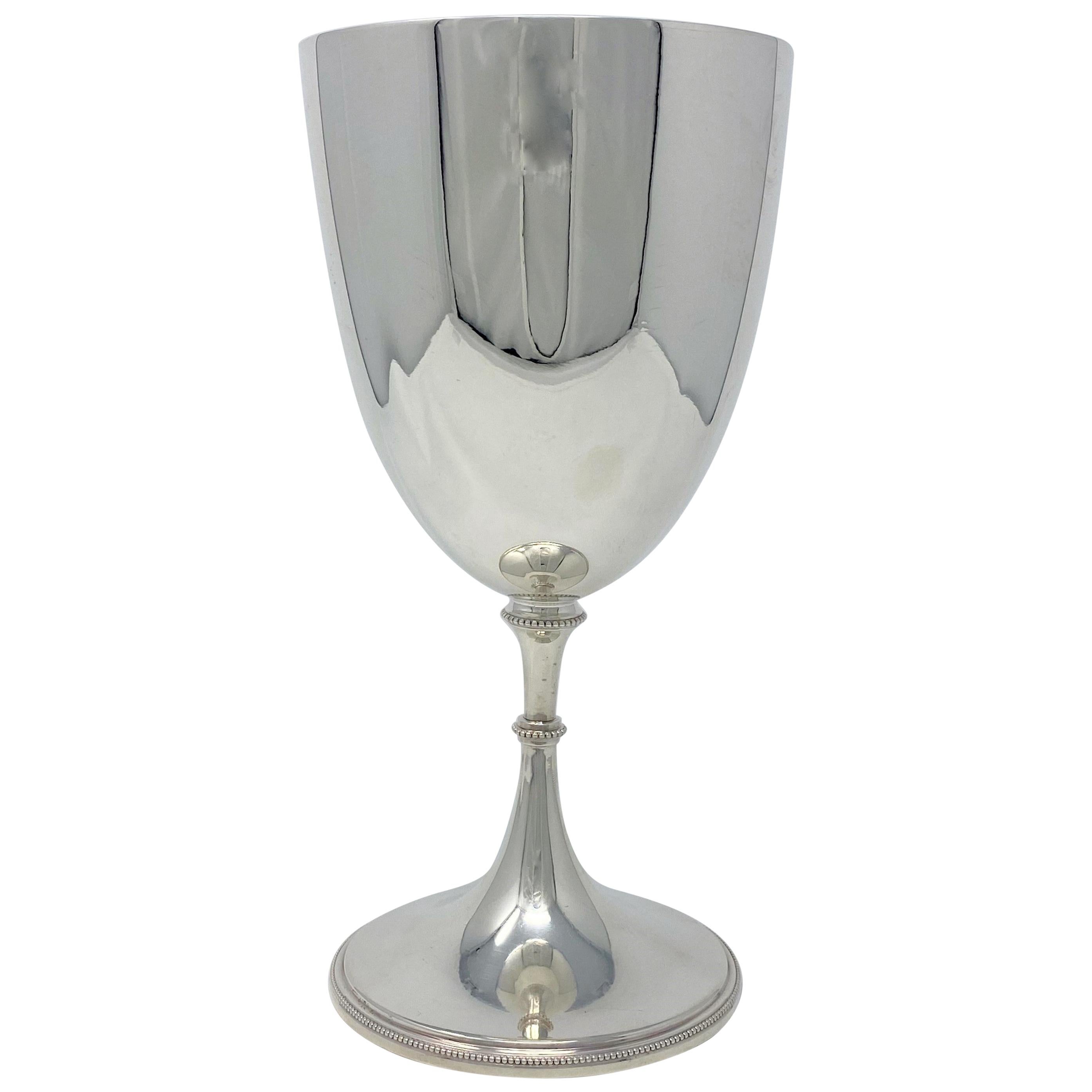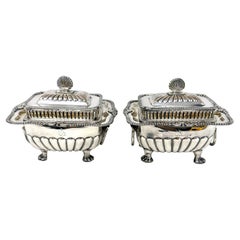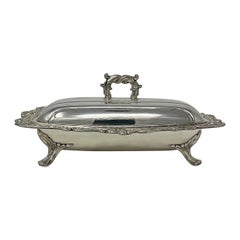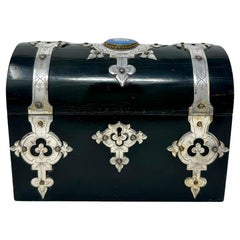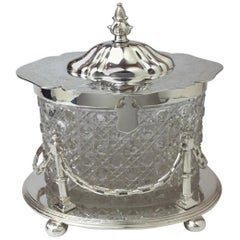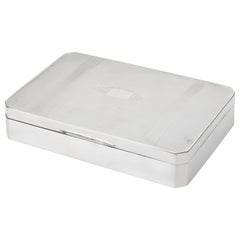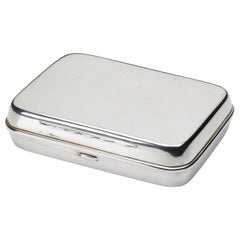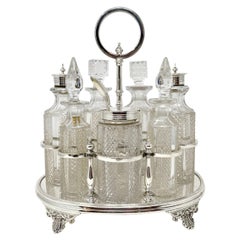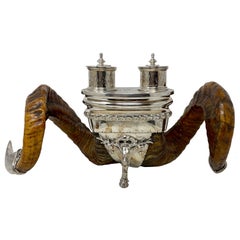
Antique English Sheffield Silver Mounted Ram's Horn Snuff Mull, Circa 1880
View Similar Items
Want more images or videos?
Request additional images or videos from the seller
1 of 7
Antique English Sheffield Silver Mounted Ram's Horn Snuff Mull, Circa 1880
$6,200List Price
About the Item
- Dimensions:Height: 8.5 in (21.59 cm)Width: 18.5 in (46.99 cm)Depth: 8 in (20.32 cm)
- Materials and Techniques:
- Place of Origin:
- Period:
- Date of Manufacture:circa 1880
- Condition:Wear consistent with age and use.
- Seller Location:New Orleans, LA
- Reference Number:Seller: SNFF0031stDibs: LU2854331886402
About the Seller
4.7
Vetted Professional Seller
Every seller passes strict standards for authenticity and reliability
Established in 1899
1stDibs seller since 2017
343 sales on 1stDibs
Typical response time: 1 hour
Authenticity Guarantee
In the unlikely event there’s an issue with an item’s authenticity, contact us within 1 year for a full refund. DetailsMoney-Back Guarantee
If your item is not as described, is damaged in transit, or does not arrive, contact us within 7 days for a full refund. Details24-Hour Cancellation
You have a 24-hour grace period in which to reconsider your purchase, with no questions asked.Vetted Professional Sellers
Our world-class sellers must adhere to strict standards for service and quality, maintaining the integrity of our listings.Price-Match Guarantee
If you find that a seller listed the same item for a lower price elsewhere, we’ll match it.Trusted Global Delivery
Our best-in-class carrier network provides specialized shipping options worldwide, including custom delivery.More From This Seller
View AllAntique English Sheffield Silver Goblet, circa 1880
Located in New Orleans, LA
This is an attractive goblet and has room for engraving if desired.
Category
Antique Late 19th Century English Barware
Materials
Silver Plate
Pair Antique English Sheffield Silver Tureens, Circa 1880.
Located in New Orleans, LA
Pair Antique English Sheffield Silver Tureens, Circa 1880.
Category
Antique Late 19th Century English Sheffield and Silverplate
Materials
Sheffield Plate
Antique English Sheffield Silver Asparagus Server, Circa 1880.
Located in New Orleans, LA
Antique English Sheffield Silver Asparagus Server, Circa 1880.
Category
Antique Late 19th Century English Sheffield and Silverplate
Materials
Sheffield Plate
Antique English Wedgwood & Sheffield Silver Mounted Jewel Box, Circa 1880.
Located in New Orleans, LA
Antique English Wedgwood Porcelain and Sheffield Silver Mounted Ebonized Jewel Box, Circa 1880.
Category
Antique Late 19th Century English Jewelry Boxes
Materials
Sheffield Plate
Antique Sheffield Silver-Plate Fork & Knife Servers with Horn Handles Circa 1880
Located in New Orleans, LA
Antique English Sheffield Silver-Plate Fork & Knife Servers with Horn Handles, Circa 1880.
Category
Antique Late 19th Century English Sheffield and Silverplate
Materials
Sheffield Plate
Antique English Stags Horn Sheffield Crumber
By Henry Wilkinson & Co.
Located in New Orleans, LA
Antique Stags Horn Sheffield Crumber Circa 1890
Category
Antique Late 19th Century English Sheffield and Silverplate
Materials
Sheffield Plate
You May Also Like
Antique English Sheffield Plate and Cut Class Biscuit Box
Located in Lambertville, NJ
Elegant English biscuit box with cut glass insert. The lid with a tapered finial handle and the body with elongated chain and post design. The oval stepped base resting on four bun f...
Category
Antique Early 1900s English Edwardian Decorative Boxes
Materials
Sheffield Plate
Hallmarked Silver Plated Keepsake Box, Sheffield, UK, circa 1900
Located in Colorado Springs, CO
Offered is a stunning silver plated keepsake box dating to 1900, with associated hallmark. This small box includes a wooden interior with two slots and a blank square on top where initials could have been engraved. A well maintained, elegant piece, this antique silver box is an excellent addition to any silver or home decor collection.
Trinket or keepsake boxes have taken on many forms since their first conception in ancient times. However their purpose remains the same; to store jewelry and other items precious to the owner. Originally, these boxes were used specifically for jewelry. These were in common use as early as 5000 BC in Ancient Egypt, when the majority of Egyptians, both male and female, wore jewelry. Boxes were used to keep these gemstone encrusted items safe. In Ancient Rome, jewelry was a status symbol. Rings and brooches were utilized to represent ones status in society. Again, boxes were needed for security and storage purposes. Finding early examples of these are quite rare.
Victorian and Edwardian examples of trinket boxes are far more common. This is because owning jewellery was a luxury until the Victorian era- let alone possessing so much a box was needed to store it all. Fine jewelry and other items became available to the masses after the industrial revolution due to the reduction in production costs. This led to a demand for trinket boxes, which were much smaller than jewelry boxes and therefore better suited to the needs of the middle class who did not yet possess an abundance of jewelry.
In Victorian households, collectables and other items of interested were also stashed inside these boxes. This is why they are known as trinket or keepsake boxes, rather than just jewelry boxes, although of course jewelry was also stored in them. Trinket boxes were produced in large numbers around this time. Many were lined with colored plush or velvet or rich wood. More elaborate designs had interior divisions and trays for rings and other pieces of jewellery. It was also common to see trinket boxes so small that they could only contain one item, such as a single ring. Ornate exteriors were created to reflect the value of the trinket boxes contents.
The Edwardian era saw the introduction of new styles of trinket box. These included small circular or oblong boxes...
Category
Antique Early 1900s English Art Deco Decorative Boxes
Materials
Silver
$600 Sale Price
20% Off
Hallmarked Silver Plated Keepsake Box, Sheffield, Uk, Circa 1900
Located in Colorado Springs, CO
Offered is a stunning Sheffield silver keepsake box dating to 1900, with associated hallmark. This small box includes a clean interior and rounded corners. The box is free of names or initials, but would have been used to house keepsakes such as jewelry or cufflinks. A well maintained, elegant piece, this antique silver box is an excellent addition to any silver collection.
Trinket or keepsake boxes have taken on many forms since their first conception in ancient times. However their purpose remains the same; to store jewelry and other items precious to the owner. Originally, these boxes were used specifically for jewelry. These were in common use as early as 5000 BC in Ancient Egypt, when the majority of Egyptians, both male and female, wore jewelry. Boxes were used to keep these gemstone encrusted items safe. In Ancient Rome, jewelry was a status symbol. Rings and brooches were utilized to represent ones status in society. Again, boxes were needed for security and storage purposes. Finding early examples of these are quite rare.
Victorian and Edwardian examples of trinket boxes are far more common. This is because owning jewellery was a luxury until the Victorian era- let alone possessing so much a box was needed to store it all. Fine jewelry and other items became available to the masses after the industrial revolution due to the reduction in production costs. This led to a demand for trinket boxes, which were much smaller than jewelry boxes and therefore better suited to the needs of the middle class who did not yet possess an abundance of jewelry.
In Victorian households, collectables and other items of interested were also stashed inside these boxes. This is why they are known as trinket or keepsake boxes, rather than just jewelry boxes, although of course jewelry was also stored in them. Trinket boxes were produced in large numbers around this time. Many were lined with colored plush or velvet or rich wood. More elaborate designs had interior divisions and trays for rings and other pieces of jewellery. It was also common to see trinket boxes so small that they could only contain one item, such as a single ring. Ornate exteriors were created to reflect the value of the trinket boxes contents.
The Edwardian era saw the introduction of new styles of trinket box. These included small circular or oblong boxes...
Category
Antique Early 1900s British Art Deco Decorative Boxes
Materials
Silver
Antique English Sheffield Silver-Plate & Crystal 6-Bottle Cruet Set, Circa 1880.
Located in New Orleans, LA
Antique English Sheffield Silver-Plate & Crystal 6-Bottle Cruet Set, Circa 1880.
Category
Antique Late 19th Century English Sheffield and Silverplate
Materials
Crystal, Sheffield Plate
Victorian Antique Centrepiece Vase, Ram Horn, Glass & Silverplate, Circa 1880
Located in London, London
Made circa 1880, this striking, Victorian, antique silver plated centrepiece, stands on Ram horn legs, and features a varicoloured glass dish and trumpet vase. The centrepiece measur...
Category
Antique 1880s English Aesthetic Movement Sheffield and Silverplate
Materials
Silver Plate
Antique English Sheffield Silver-Plate and Crystal 6-Bottle Cruet Set circa 1880
Located in New Orleans, LA
Antique English Sheffield silver-plate and crystal 6-bottle cruet set, circa 1880-1890.
Category
Antique Late 19th Century English Sheffield and Silverplate
Materials
Crystal, Sheffield Plate
Recently Viewed
View AllMore Ways To Browse
Rams Horn Snuff
Snuff Mull
Horn Snuff Mull
John Millward Banks Cigarette Box
Masonic Snuff Box
Biltons England
Hermes Compendium
Gustav Klingert
Cigarette Case Agate
Queen Anne Silver Tobacco Box
Terracotta Tobacco Jar
Tortoise Shell Cigarette
German Porcelain Snuff Boxes
Limoges Snuff Box
Faberge Cigarette Box
Snuff Faux
18ct Gold Snuff Box
Faberge Snuff Box
